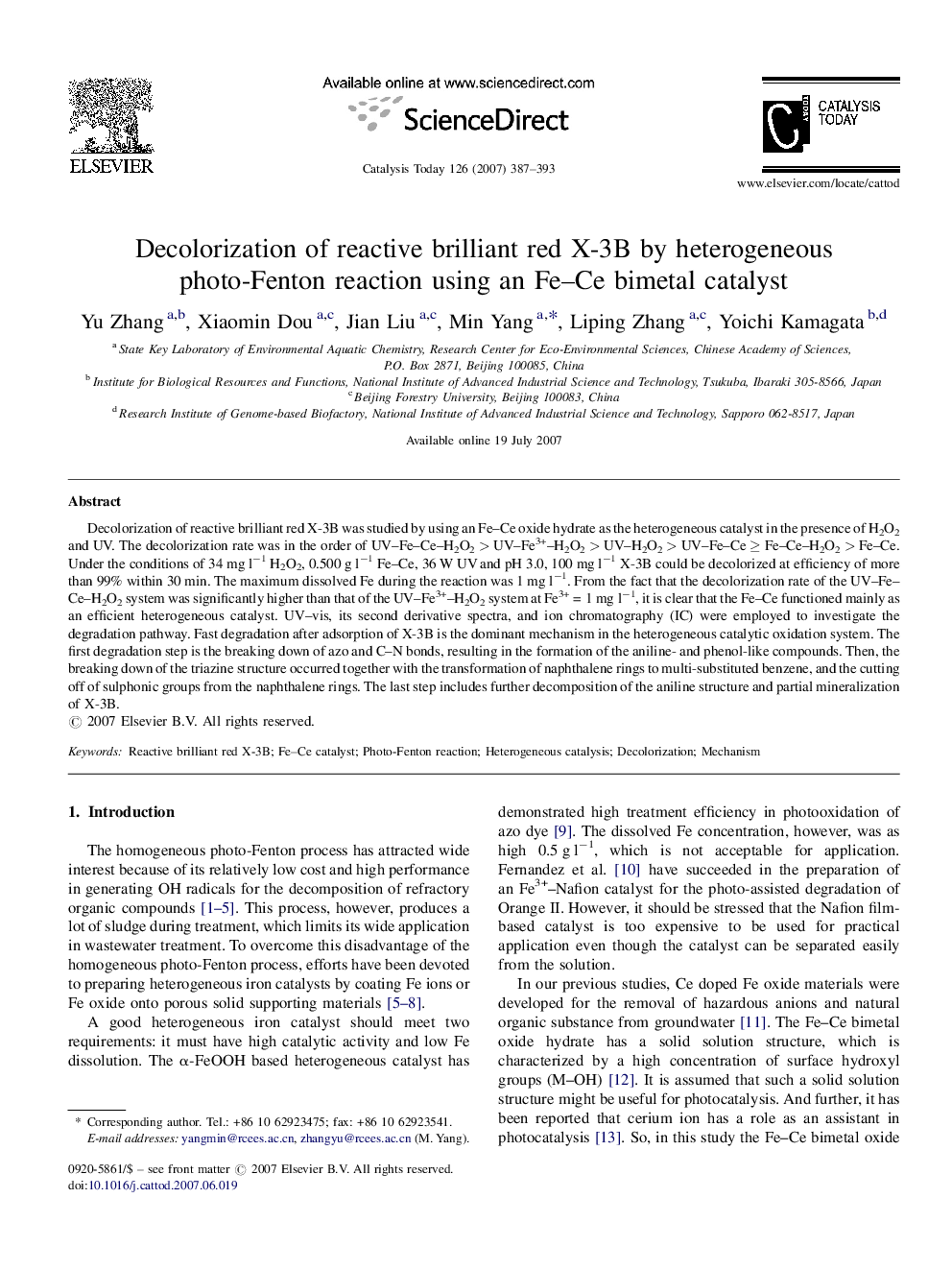| Article ID | Journal | Published Year | Pages | File Type |
|---|---|---|---|---|
| 57829 | Catalysis Today | 2007 | 7 Pages |
Decolorization of reactive brilliant red X-3B was studied by using an Fe–Ce oxide hydrate as the heterogeneous catalyst in the presence of H2O2 and UV. The decolorization rate was in the order of UV–Fe–Ce–H2O2 > UV–Fe3+–H2O2 > UV–H2O2 > UV–Fe–Ce ≥ Fe–Ce–H2O2 > Fe–Ce. Under the conditions of 34 mg l−1 H2O2, 0.500 g l−1 Fe–Ce, 36 W UV and pH 3.0, 100 mg l−1 X-3B could be decolorized at efficiency of more than 99% within 30 min. The maximum dissolved Fe during the reaction was 1 mg l−1. From the fact that the decolorization rate of the UV–Fe–Ce–H2O2 system was significantly higher than that of the UV–Fe3+–H2O2 system at Fe3+ = 1 mg l−1, it is clear that the Fe–Ce functioned mainly as an efficient heterogeneous catalyst. UV–vis, its second derivative spectra, and ion chromatography (IC) were employed to investigate the degradation pathway. Fast degradation after adsorption of X-3B is the dominant mechanism in the heterogeneous catalytic oxidation system. The first degradation step is the breaking down of azo and CN bonds, resulting in the formation of the aniline- and phenol-like compounds. Then, the breaking down of the triazine structure occurred together with the transformation of naphthalene rings to multi-substituted benzene, and the cutting off of sulphonic groups from the naphthalene rings. The last step includes further decomposition of the aniline structure and partial mineralization of X-3B.
